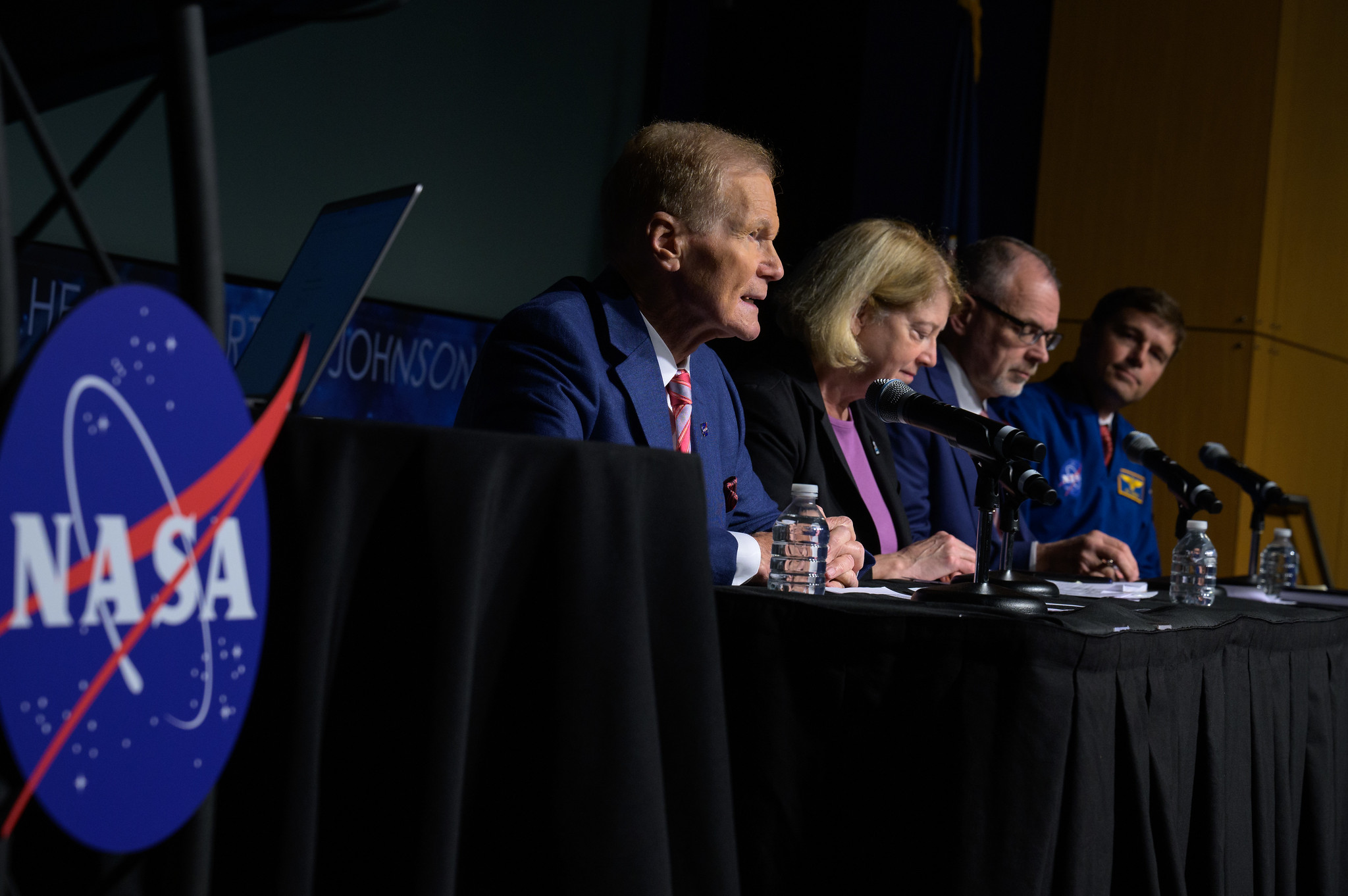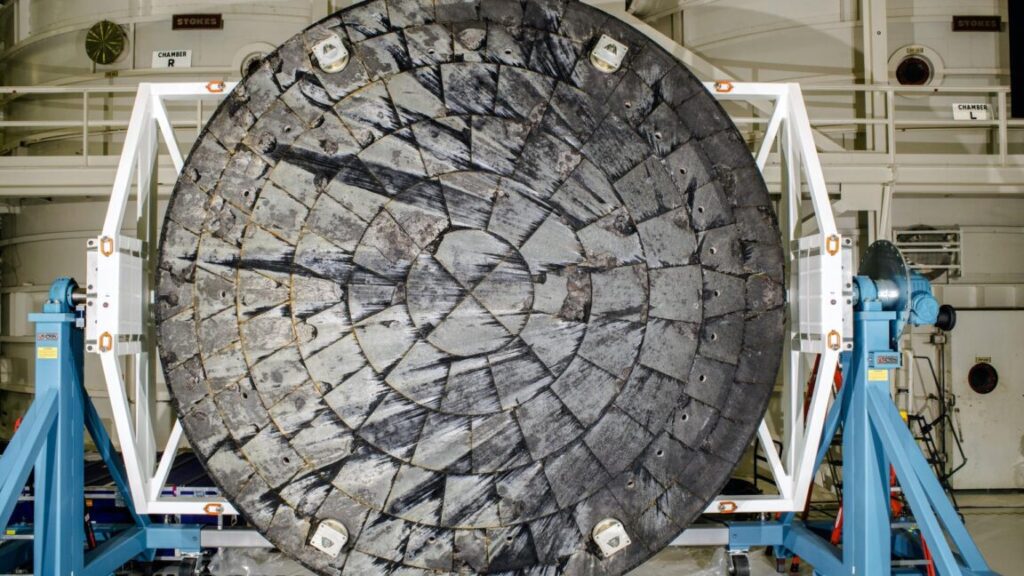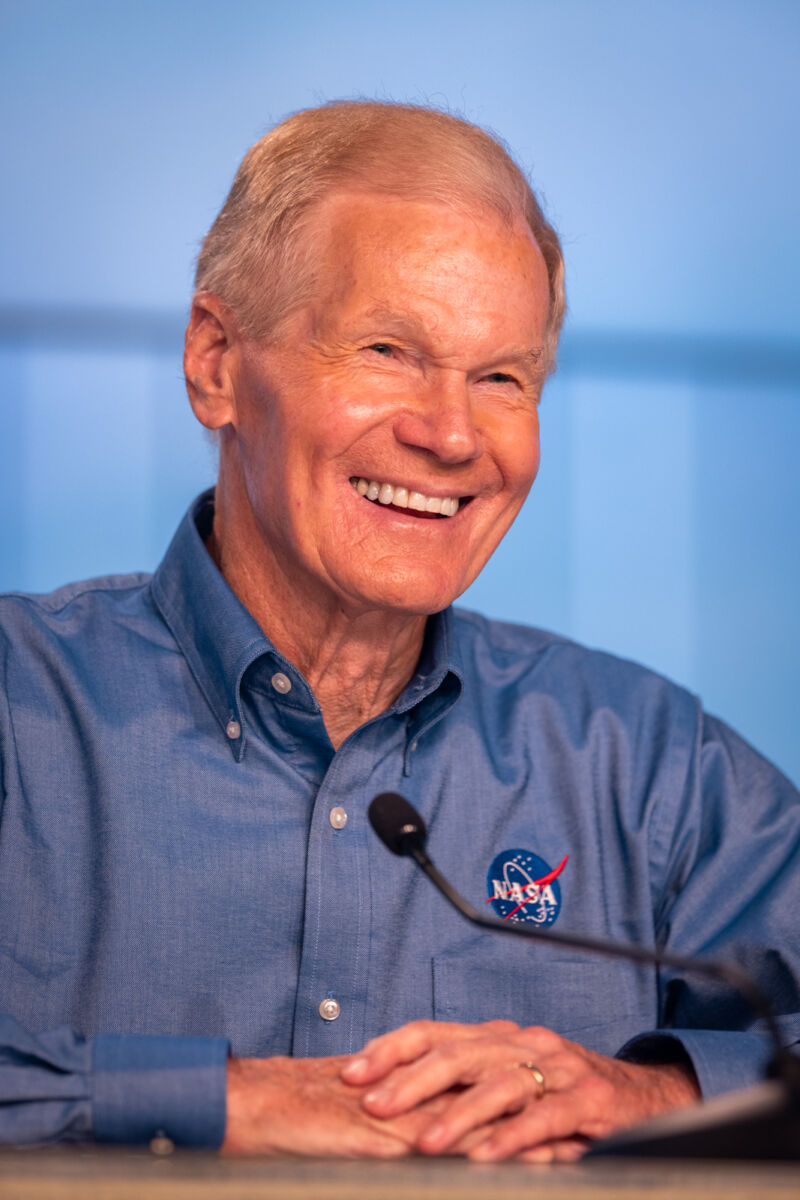NASA says Orion’s heat shield is good to go for Artemis II—but does it matter?
“We have since determined that while the capsule was dipping in and out of the atmosphere, as part of that planned skip entry, heat accumulated inside the heat shield outer layer, leading to gases forming and becoming trapped inside the heat shield,” said Pam Melroy, NASA’s deputy administrator. “This caused internal pressure to build up and led to cracking and uneven shedding of that outer layer.”
An independent team of experts concurred with NASA’s determination of the root cause, Melroy said.

NASA Administrator Bill Nelson, Deputy Administrator Pam Melroy, Associate Administrator Jim Free, and Artemis II Commander Reid Wiseman speak with reporters Thursday in Washington, DC. Credit: NASA/Bill Ingalls
Counterintuitively, this means NASA engineers are comfortable with the safety of the heat shield if the Orion spacecraft reenters the atmosphere at a slightly steeper angle than it did on Artemis I and spends more time subjected to higher temperatures.
When the Orion spacecraft climbed back out of the atmosphere during the Artemis I skip reentry, a period known as the skip dwell, NASA said heating rates decreased and thermal energy accumulated inside the heat shield’s Avcoat material. This generated gases inside the heat shield through a process known as pyrolysis.
“Pyrolysis is just burning without oxygen,” said Amit Kshatriya, deputy associate administrator of NASA’s Moon to Mars program. “We learned that as part of that reaction, the permeability of the Avcoat material is essential.”
During the skip dwell, “the production of those gases was higher than the permeability could tolerate, so as a result, pressure differential was created. That pressure led to cracks in plane with the outer mold line of the vehicle,” Kshatriya said.
NASA didn’t know this could happen because engineers tested the heat shield on the ground at higher temperatures than the Orion spacecraft encountered in flight to prove the thermal barrier could withstand the most extreme possible heating during reentry.
“What we missed was this critical region in the middle, and we missed that region because we didn’t have the test facilities to produce the low-level energies that occur during skip and dwell,” Kshatriya said Thursday.
During the investigation, NASA replicated the charring and cracking after engineers devised a test procedure to expose Avcoat heat shield material to the actual conditions of the Artemis I reentry.
So, for Artemis II, NASA plans to modify the reentry trajectory to reduce the skip reentry’s dwell time. Let’s include some numbers to help illustrate the difference.
The distance traveled by Artemis I during the reentry phase of the mission was more than 3,000 nautical miles (3,452 miles; 5,556 kilometers), according to Kshatriya. This downrange distance will be limited to no more than 1,775 nautical miles (2,042 miles; 3,287 kilometers) on Artemis II, effectively reducing the dwell time the Orion spacecraft spends in the lower heating regime that led to the cracking on Artemis I.

NASA’s inspector general report in May included new images of Orion’s heat shield that the agency did not initially release after the Artemis I mission. Credit: NASA Inspector General
With this change, Kshatriya said NASA engineers don’t expect to see the heat shield erosion they saw on Artemis I. “The gas generation that occurs during that skip dwell is sufficiently low that the environment for crack generation is not going to overwhelm the structural integrity of the char layer.”
For future Orion spaceships, NASA and its Orion prime contractor, Lockheed Martin, will incorporate changes to address the heat shield’s permeability problem.
Waiting for what?
NASA officials discussed the heat shield issue, and broader plans for the Artemis program, in a press conference in Washington on Thursday. But the event’s timing added a coat of incredulity to much of what they said. President-elect Donald Trump, with SpaceX founder Elon Musk in his ear, has vowed to cut wasteful government spending.
NASA says Orion’s heat shield is good to go for Artemis II—but does it matter? Read More »


